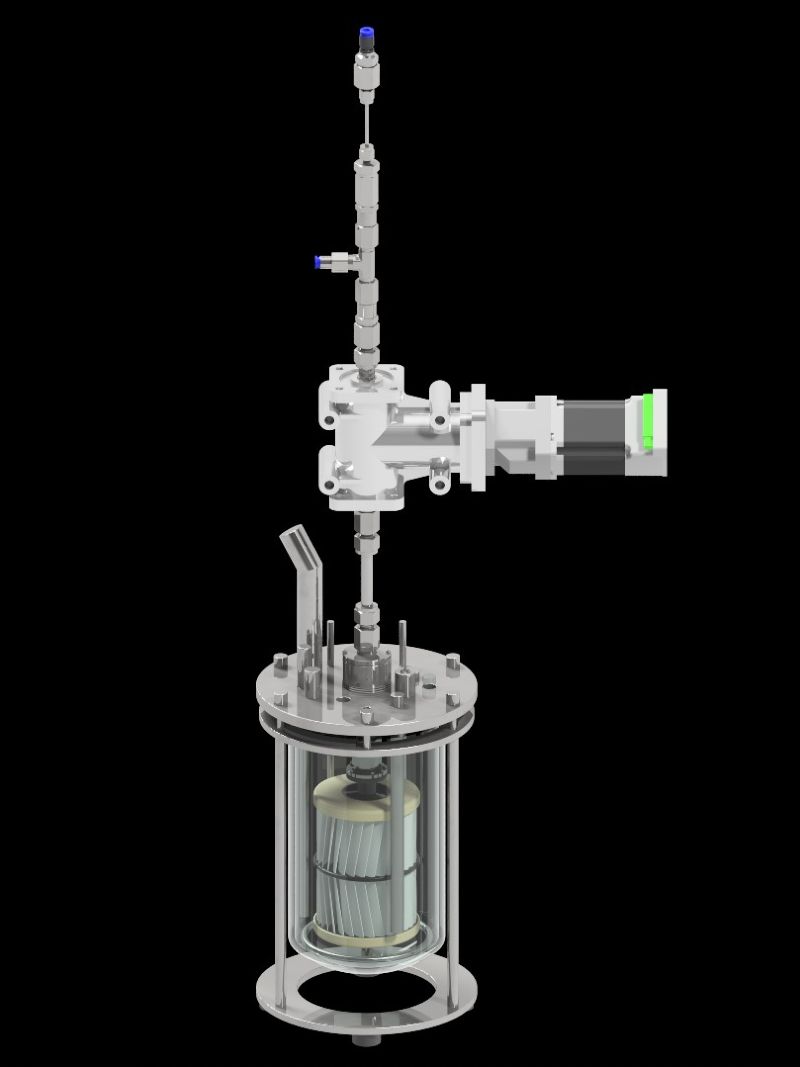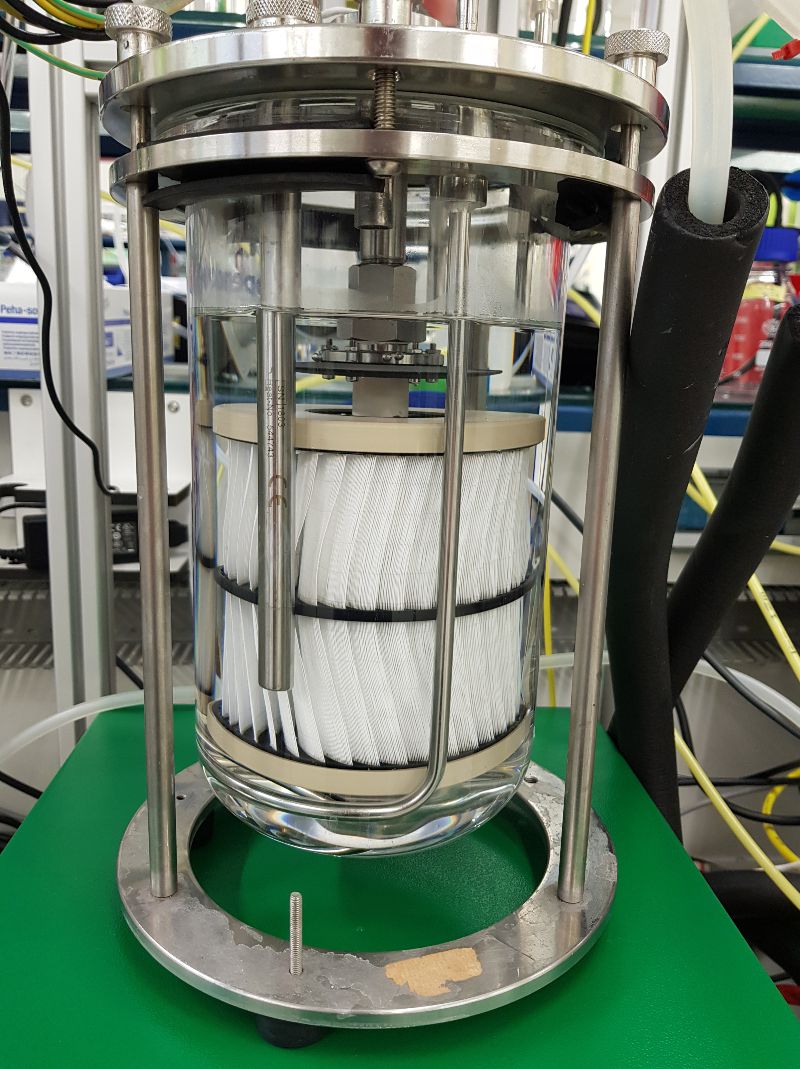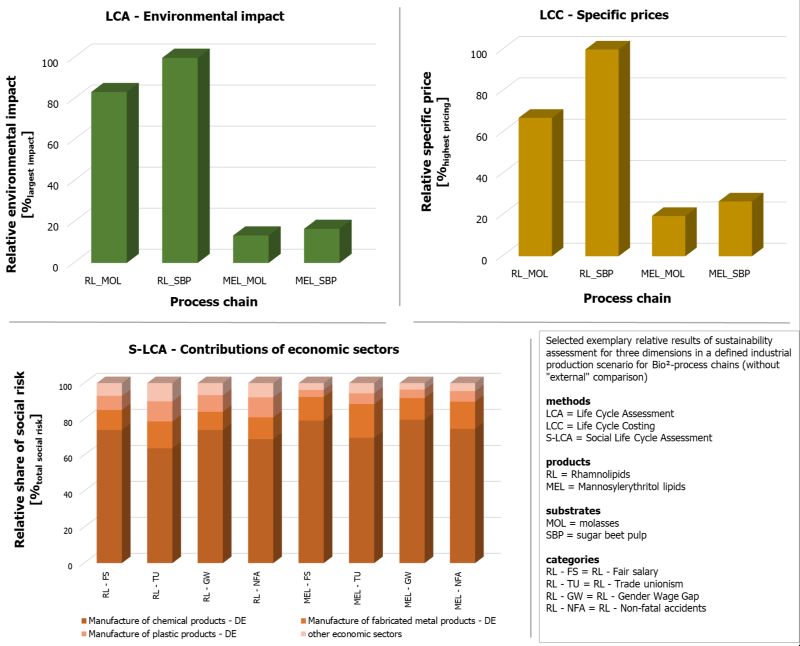The production of microbial biosurfactants is related to the idea of an innovative and sustainable process design. Microbiological aspects, an optimized fermentation strategy and an efficient downstream process form the basis. The development of a novel in-situ membrane module, which combines the advantages of bubble-free aeration and unique control functions during fermentation, has eliminated the need for mechanical and chemical methods of foam destruction. Based on the demand for maximum recovery and purity of the product under consideration of minimized use of resources, downstream processing strategies were developed and evaluated. Based on data from laboratory and technical scale studies, a life cycle assessment, a life cycle costing analysis and a social life cycle assessment of the processes were carried out in order to identify starting points for optimization and the identification of advantageous process characteristics.
Foam-free gassing thanks to membrane technology - several prototypes of in-situ membrane modules for bubble (and therefore foam) -free aeration were manufactured and tested during the project period. By combining high-tech production (5-axis CNC milling, 3D printers, plasma surface activation), special membranes from the field of medical technology ("artificial lungs") and flow-simulations, it was possible for the first time to efficiently supply an aerobic fermentation-broth with oxygen. The results (space-time yield of 76.8 mg rhamnolipid per liter and hour) are even more remarkable with regard to the much simpler down-streaming process (elimination of anti-foaming agents), considering that larger systems could also be supplied in this way without the use of mechanical foam destroyers.
RWTH Aachen University recognized the potential of this technology and a patent application was passed („Membranmodul für blasenfreie Begasung“; DE 10 2020 102 420.7). After more than fourteen successful fermentations with the project partners at iAMB and AVT.BioVT, joint publications have been launched. Interestingly, this technology can also be combined with in-situ cell retention membranes, which enables additional process intensification. As part of the “Excellence Start-up Center.NRW - Innovation Sprint” project, this technology received additional funds in order to be able to develop further prototypes even after the end of funding in the BioSC and to increase industrial technology maturity. The RWTH Aachen University spin-off project “BioThrust” aims to prove this.


Fig. 1: Left part shows the CAD-view of the Set-up including the engine, gas-supply connectors and the bioreactor with the integrated membrane-stirrer module. Right picture shows a detailed view in the laboratory for the abiotic gas transfer characterization of the membrane-stirrer module in a 3 L vessel.
Evaluation and optimization of downstream processing strategies - the development of efficient and resource-saving downstream process concepts represents a major challenge in the context of sustainable biosurfactant production. Based on process understanding and knowledge from literature, relevant unit operations were identified, intensively evaluated with regard to relevant performance parameters, and connected to downstream process concepts. For the evaluation of unit operations with regard to relevant parameters, model-based screening approaches were included in the investigations, in addition to experimental data recorded in the laboratory. Model-based approaches offer the possibility to investigate a multitude of relevant parameters of unit operations in a resource-saving way. Using liquid-liquid extraction as an example, a model-based solvent screening was performed to select the best solvent from a large number of candidates. On the basis of the experimental and simulation data, unit operations were connected to downstream process concepts and process parameters were set.
In addition to these conventional downstream process concepts subsequent to a completed fermentation, an integrated process concept was also pursued in cooperation with AVT.BioVT and AVT.CVT. This concept combined the fermentation process with bubble-free aeration and in situ extraction and offers the potential to increase the productivity of the overall process and to further minimize the problem of foam formation by continuous separation of the product. The process concept showed promising approaches for process intensification in laboratory scale.
Sustainability assessment of biosurfactant production - using established assessment methods of Life Cycle Assessment (LCA), Life Cycle Cost Analysis (LCC) and database-based Social Risk Assessment (S-LCA), four production routes (2 products, 2 substrates) were examined with regard to their sustainability. The systems covered processes from biomass supply to the product biosurfactant.
The comparison showed that the production of mannosylerythritol lipids (MEL) has a lower environmental impact than the production of rhamnolipids (RL), whereby the choice of substrate played a minor role. A comparison with the environmental impacts of conventional surfactants showed promising results, which can be further improved by recycling optimization and more precise design. With regard to the economic evaluation, the competitiveness of the developed processes and products could be assessed in positive terms in comparison to the current market situation by a market data analysis, economic key figures and specific product prices. Thus, the industrial production of microbial biosurfactants is generally possible within an economic framework. The evaluation of social risks on the basis of relevant indicators and stakeholders was able to show which aspects should be considered as priorities. Influencing factors, such as the effects of production location and economic sector on social risks could be determined.
The lower environmental impacts, lower specific prices and clear advantages of selected social risk indicators suggest that the production of MEL seems more reasonable. In addition, starting points for optimization could be determined, critical flows were identified and development recommendations derived from the findings.

Fig. 2: Illustration of selected exemplary relative results for the three dimensions of sustainability for four examined process chains in an industrial scale.
Dr. Wilhelm Kuckhinrichs
Andreas Schonhoff
Dr. Petra Zapp
Dr. Andrea Schreiber
Institute of Energy and Climate Research – Systems Analysis and Technology Evaluation
Forschungszentrum Jülich
Prof. Matthias Wessling
Patrick Bongartz
Chair of Chemical Process Engineering
RWTH Aachen University
Prof. Andreas Jupke
Andreas Biselli
Chair of Fluid Process Engineering
RWTH Aachen University